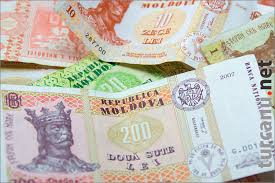ECONOMY
Moldova is at a crossroads geographically, politically, and economically. Positioned between Western Europe and the Commonwealth of Independent States (CIS), Moldova has the advantage of geographical and cultural proximity to both western markets and eastern markets. Economic transition has been typical of most post-communist counties, change and adaptation has been a slow and complex process.
After the collapse of the USSR and the declaration of independence on 27 August 1991, Moldova began a transition to a market economy and experienced a significant economic recession. The crisis in Moldova lasted for 10 years, from 1990 to 1999. During this period GDP decreased by almost three times.
From 2000 the situation has become brighter and analysts point to a number of more positive economic tendencies. Between 2000-2005, GDP in real terms increased by 43% with steady economic growth of 6% per annum. However, starting in 2006, growth slowed again, to 4%, a situation mainly caused by an import embargo in Russia on Moldovan wines and fruits. In 2009, Moldova’s economic growth actually contracted by 6%, but has since rebounded modestly. The government is continuing efforts to attract investment and stimulate exports as means of accelerating Moldova’s economic growth.
An important part of Moldova’s growth since 2000 has been the large number of Moldovans working abroad. More than half a million Moldovans work in Europe and Russia. Remittances transferred to Moldova by these citizens are still an important contributor to GDP growth.
 Agriculture and food processing are important to Moldova’s economy, accounting for about one quarter of the country’s GDP. Moldova’s fertile soil supports wheat, corn, barley, tobacco, sugar beet, soybeans, sunflower seeds, walnuts, apples, and other fruits. Beef and dairy cattle are also raised, and beekeeping is widespread. Wine is Moldova’s best-known product, produced from grapes from vineyards that are concentrated in the central and southern part of the country. Moldova also produces sparkling wine and brandy.
Agriculture and food processing are important to Moldova’s economy, accounting for about one quarter of the country’s GDP. Moldova’s fertile soil supports wheat, corn, barley, tobacco, sugar beet, soybeans, sunflower seeds, walnuts, apples, and other fruits. Beef and dairy cattle are also raised, and beekeeping is widespread. Wine is Moldova’s best-known product, produced from grapes from vineyards that are concentrated in the central and southern part of the country. Moldova also produces sparkling wine and brandy.
Light manufacturing, including the production of clothing and textiles, footwear, leather goods, and carpets is also important, ranking second in terms of output and first in terms of exports. These industries benefit from low labor costs, preferential customs duties, and Moldova’s proximity to Europe.
Finally, trade and services, telecommunications, information technology, and transportation, also contribute significantly to the economy, accounting for another 25% of GDP. The Moldovan information communications technology market is at an early stage of development; yet it is among the most dynamic sectors of the economy. Moldova has one of the highest Internet connection speeds in the world, especially in Chisinau. Double digit growth was recorded in the number of Moldovan Internet connections in 2009 and 2010, with increased provider efforts to cover the market as fast as possible. Excellent Internet connections, geographic and cultural proximity to Europe, a highly educated and multilingual workforce, and affordable labor costs have also sparked a thriving ‘near shore’ industry. Moldova has become a preferred near shoring destination for many European markets.





